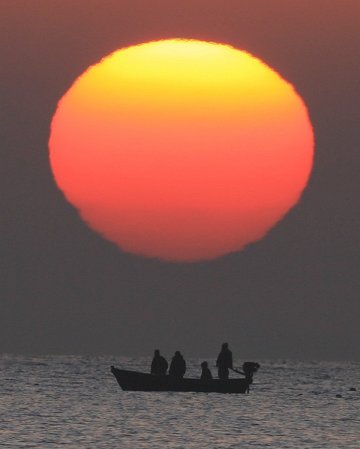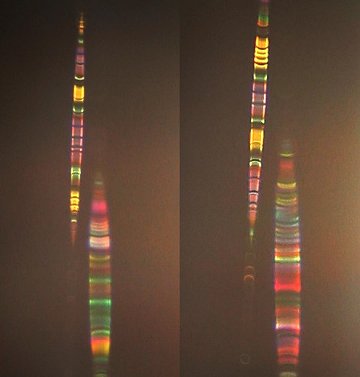 Where's Saturn? Is that a UFO--or the ISS? What's the name of that star? Get the answers from mySKY--a fun new astronomy helper from Meade. Where's Saturn? Is that a UFO--or the ISS? What's the name of that star? Get the answers from mySKY--a fun new astronomy helper from Meade. THE WORLD AT NIGHT: "I'm pleased to announce a new web site, The World Night At Night," says Iranian photographer and science journalist Babak A. Tafreshi. "It is a photo-collection of the world's most beautiful and historic sites against the nighttime backdrop of stars, planets and celestial events. The eternally peaceful sky looks the same above all nations, attesting to the truly unified nature of Earth as a planet rather than an amalgam of human-drawn territories." The site's galleries are a Christmas treat. SOLAR ACTIVITY: Sometimes the best solar activity is a sunrise. Consider this one photographed by Xiaowen Yang of Beidaihe Qinghuangdao, China, on Dec. 23rd: 
The sun's strange shape is not a flaw in Yang's camera; it's a mirage caused by a gradient in air temperature above the water. Moments before this photo was taken, the spellbound fisherman witnessed an even stranger shape: the omega sun once popularized by science fiction writer Jules Verne. Click to browse the complete sunrise sequence: #1, #2, #3, #4. Because the sun is so utterly blank and quiet--no sunspots!--sunrises and sunsets are the only solar activity we're likely to see for the rest of the week. A beach is the best place to look. SPIDER CHRISTMAS: On Christmas Eve in France even the spider webs were decorated. Near Paris, Denis Joye pointed his camera into a sunlit web and took this picture: 
Les Cowley explains the merry display: "Spiders make their colored Christmas decorations in many ways. Some are produced by tiny dew drops on the web. These, however, are more subtle, regular bulges spun into the silken thread and internal coiled structures scatter and diffract light." "Inside some silks there are internal threads that coil and uncoil," he says. "These act as tensioning springs and shock absorbers when an insect collides with the web. Internal structures like these could also be sources of diffraction. Spiders spin several types of silk and there are many many varieties of spider. There is more to spiders than meets the eye!"
Comet 8P/Tuttle Photo Gallery
[World Map of Comet Sightings]
[sky map] [comet cameras] [ephemeris] [orbit] | 
